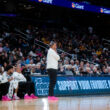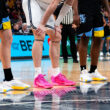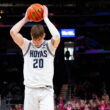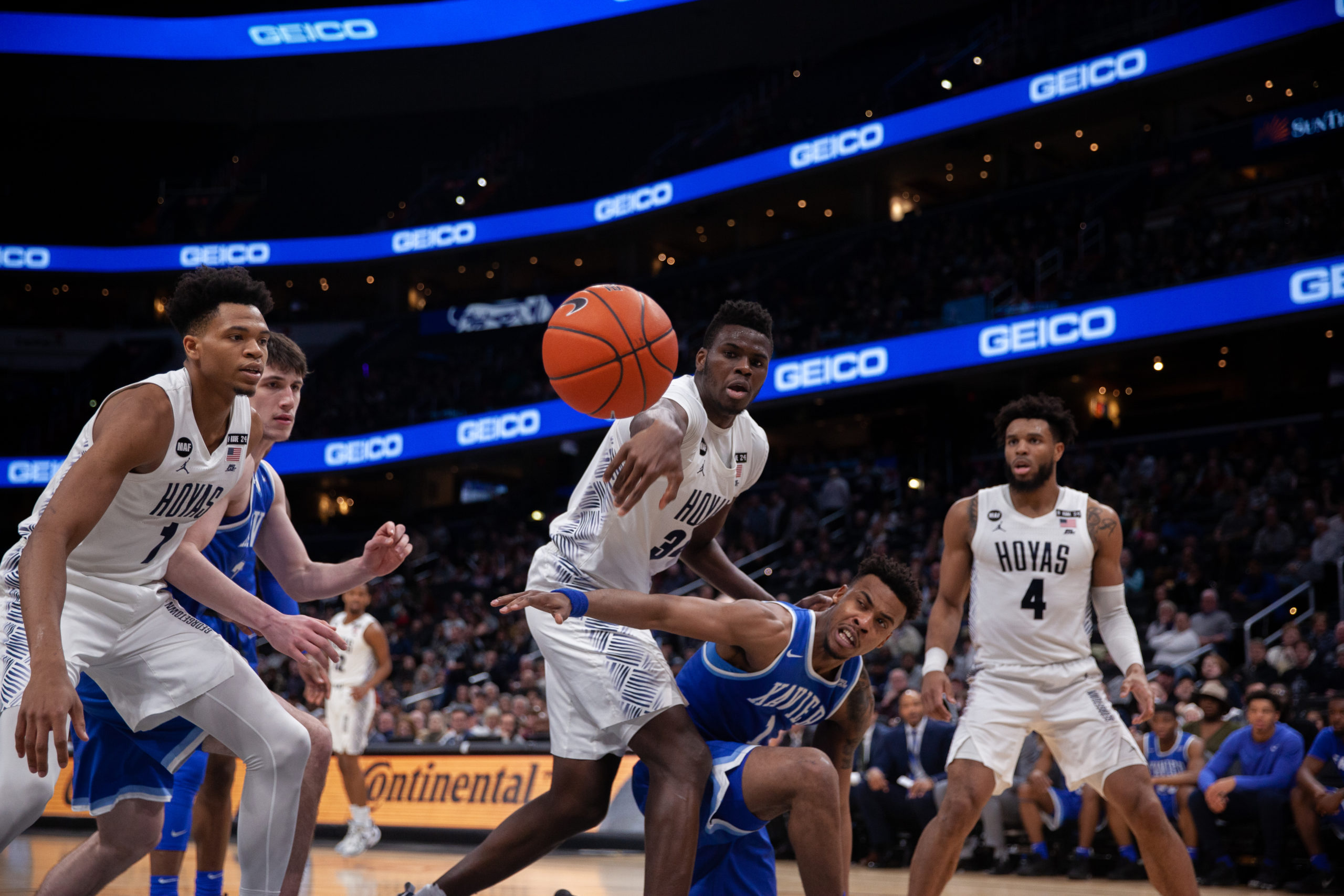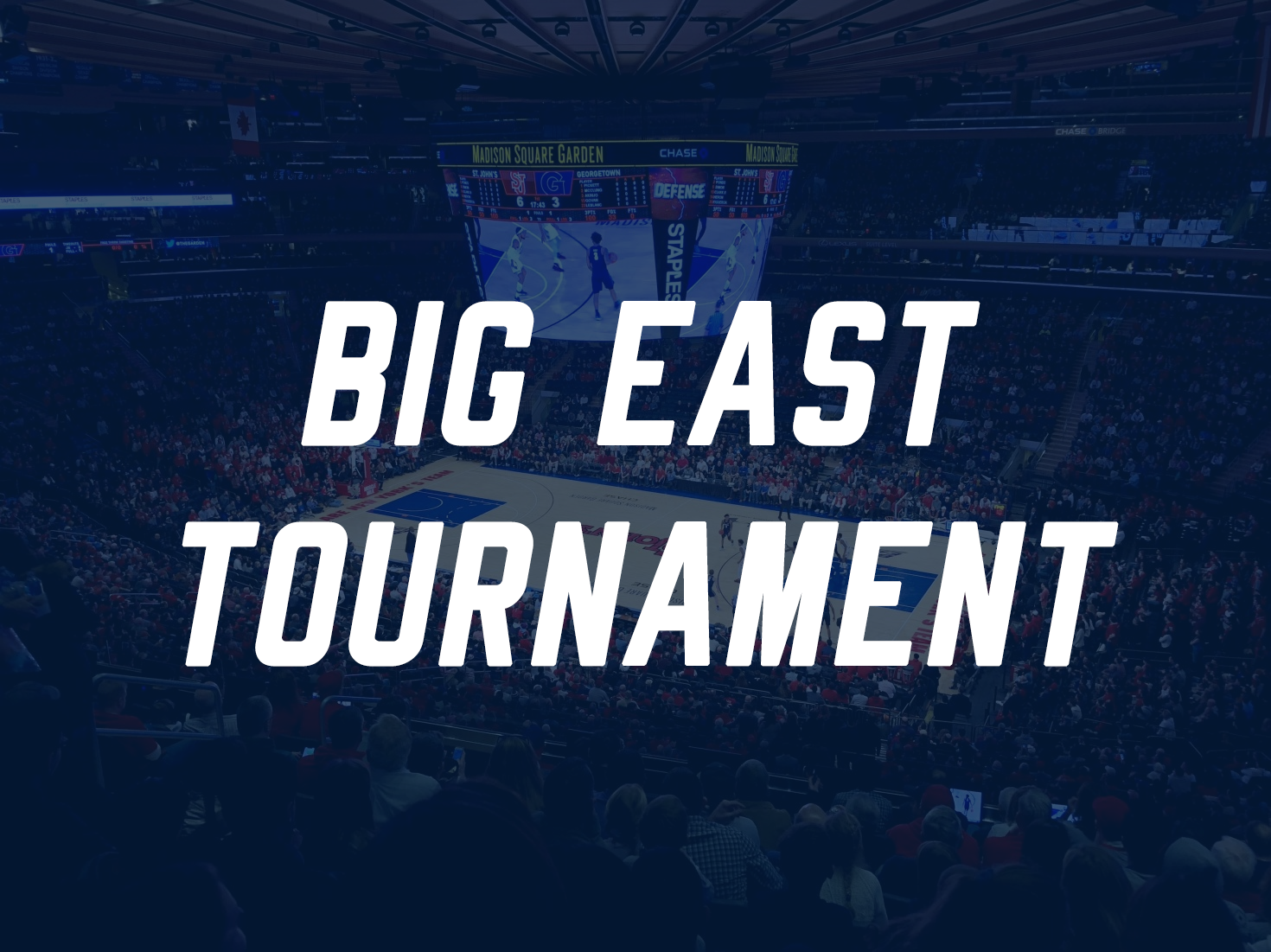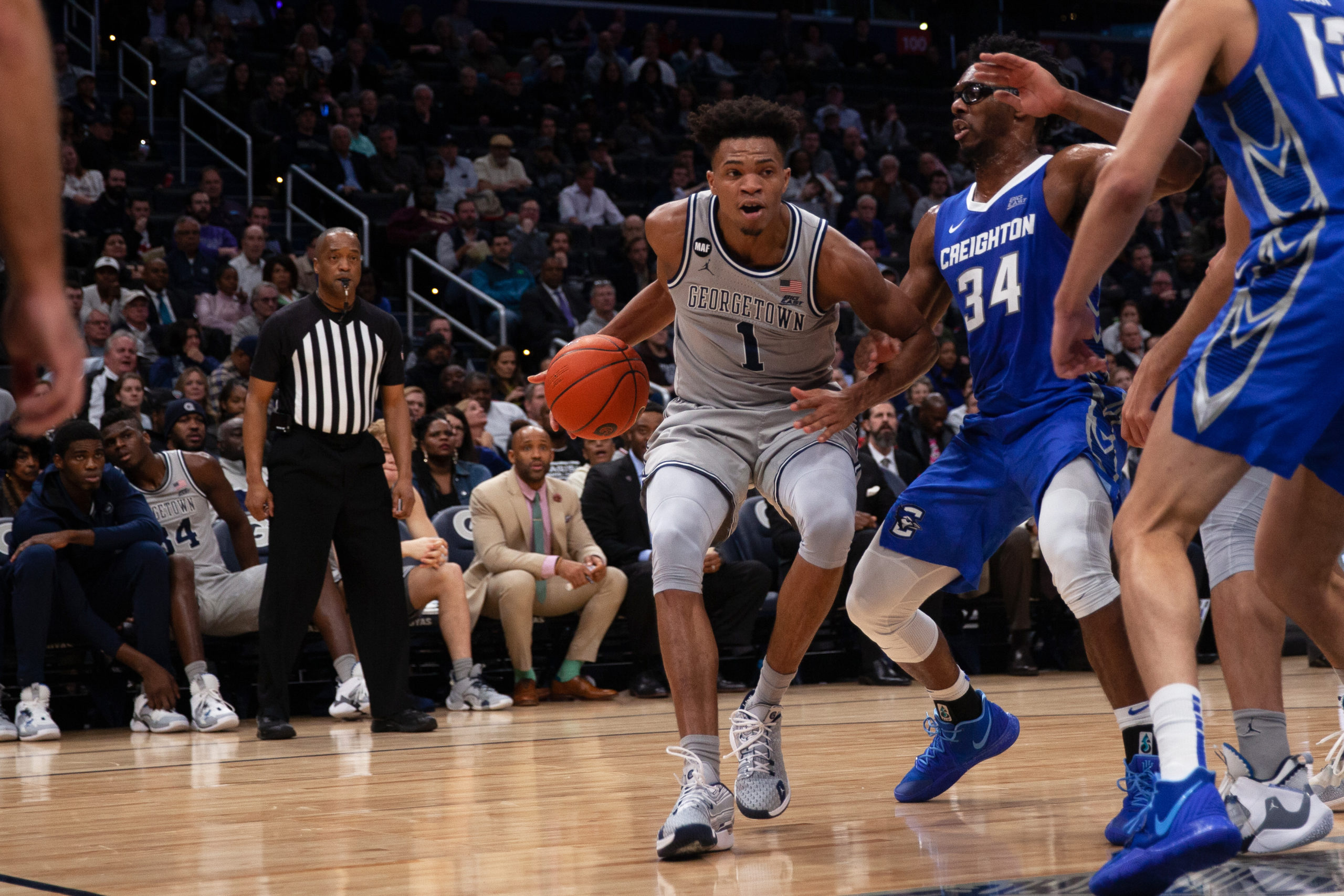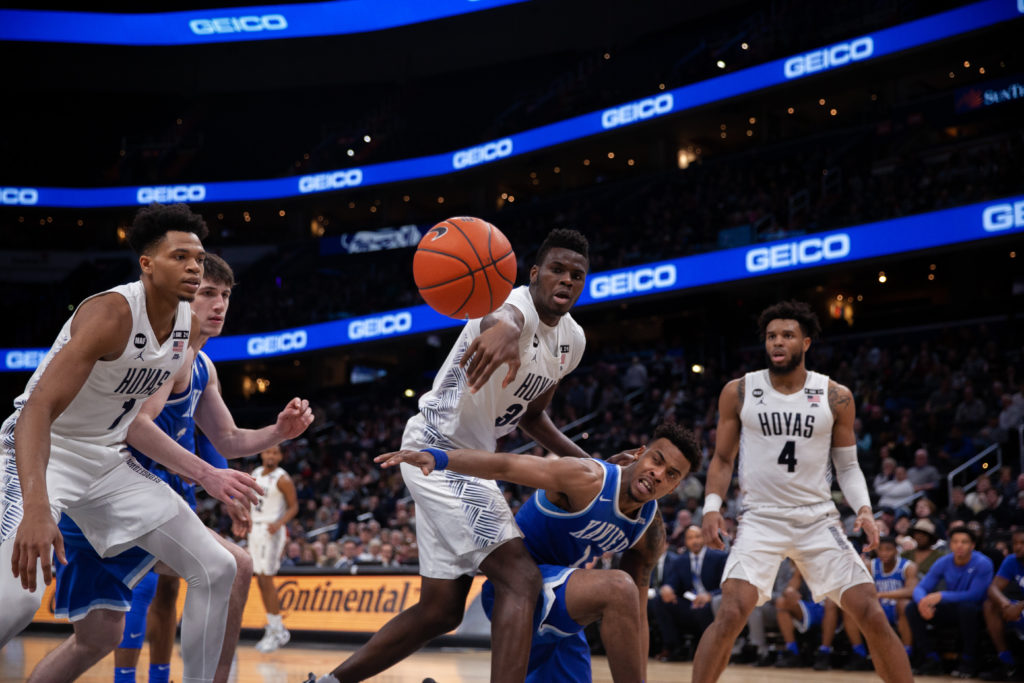
With the start of what looks to be an unpromising 2020-21 season approaching for the Hoyas, there are many aspects that Coach Ewing and the squad need to improve on, most notably on the defensive side. The team visibly struggled to handle the high-powered offenses they faced, including the likes of a Marquette team led by Markus Howard, who dropped a cool 42 points in Capital One, a star-studded Duke team, an always efficient Villanova squad and the second best three-point shooting team in the country in the Bluejays of Creighton. So what exactly was the problem for Hoyas, and what can Coach Ewing do to ensure there isn’t a repeat of it?
The most obvious answer to this question is the three-point defense. Georgetown allowed opposing teams to shoot 36.4% from behind the arc. That puts the Hoyas at 313th in the country… out of 353 teams (and by far the worst in the Big East). The only major conference team that was worse than the Hoyas was UCLA at 38.3%. Georgetown’s perimeter defense was horrendous, and it didn’t help that the Big East had to two of the top ten three-point shooting teams in the country last year in Creighton and Marquette. 41.9% of all field goals attempted against the Hoyas were from three (299th in the country), and 37.7% of all points given up were from three (340th in the country). Teams saw our weakness and exploited it.
The worst part is, the Hoyas’ three point defense actually didn’t change much at all throughout the season. In the opening ten games, only two teams shot below 30% from three against the Hoyas. In the closing ten games, only one team shot below 30%, and that was during the season’s trademark win at Butler (who still put up 32 attempts). So what can Patrick Ewing change to lower these numbers? Unfortunately, not all that much during the games. A lot of three-point defense is based on communication, individual effort and quickness in closing out the shooter, and last year there seemed to be very little of that from Georgetown. But you can’t really blame a team that had a six to seven man rotation for the majority of the season. The introduction of nine new players should help tremendously on the weight of the load on the players, allowing them to give maximum effort on both ends of the floor. It will be Ewing and the coaching staff’s job to get the most effort out of his players, and it may actually help that Mac McClung is leaving. McClung was no doubt one of the key members of the offense, but defensively, he was often caught lacking and was a liability for the team.
In an attempt to limit the number of open three-point opportunities for the opponent, Ewing famously adopted a hard-hedge defense on pick and rolls. The hard-hedge from the big man limits the ball-handler’s shot opportunity off of a screen, but, if this big man can’t shift over in time, the ball-handler can take a relatively open shot or dish it to a wide open roller for an easy two points. Georgetown struggled with pick and rolls on defense, and there was a sense of disconnect between the players and Ewing on what scheme to go with. In a recent interview, Qudus Wahab hinted at a possible change from the hard-hedge to the drop defense, but the cost of this could lead to more open three-point opportunities off the screen. With sharpshooters like Markus Howard, Myles Powell, Tyshon Alexander and Kamar Baldwin all leaving the Big East for professional dreams, maybe Ewing is willing to take that risk to protect an easy two points off of the play.
In terms of interior defense, Georgetown actually did a fairly decent job, and is looking to continue to improve on that. Last season, the Hoyas had a block percentage of 11.5% (56th in the country), and with the likes of Qudus Wahab and Timothy Ighoefe having a long offseason to bulk up and work on their defensive footwork, I can only imagine this figure will improve. We saw flashes of their potential last season, and Wahab showed he has the ability to own the paint with his six block performance against DePaul. Georgetown can dominate on the glass too, where they can play a “big” lineup of any two guards (likely to be Jalen Harris and Jahvon Blair) with Jamorko Pickett (6’9”), Wahab (6’11”) and Ighoefe (7’0”).
Last season, Coach Ewing also consistently put Jagan Mosely on the opposing team’s best scorer, and with his departure it will be interesting to see who takes on that role. Jamorko Pickett may be the favorite, as he knows Ewing’s system the best, but I wouldn’t be surprised to see Jalen Harris get assigned to the more shifty players. Harris has averaged nearly a steal a game throughout his career and has the experience and ability to contain anyone.
Overall, the Hoyas and Patrick Ewing have a lot to prove defensively in the coach’s fourth year in charge. I hope we will see that Ewing can get the most out of his team so we can avoid another disappointing year of Georgetown basketball.
